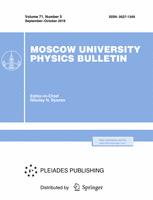Рассматриваются особенности поведения квантовых частиц в различных экспериментальных ситуациях. Рассмотрены варианты двухлучевой интерференции одиночного фотона и возможности формирования им «стоячей» и «бегущей волны» с интерференционными минимумами – «мертвыми» зонами на пути его распространения, которые наглядно демонстрируют качественные отличия поведения одиночного фотона в зависимости от того, распределен ли он по одной или двум пространственным модам. При наблюдении же трехлучевой интерференции оказывается, что до момента фотодетектирования в световом поле одновременно должны присутствовать все три моды. Если в каждой моде присутствует по фотону, то это противоречит закону сохранения энергии, что свидетельствует о том, что до момента измерения (априори) наблюдаемая величина (число фотонов в поле) не имеет какого-либо определенного значения, если, конечно, квантовая система не находится в собственном (фоковском) состоянии измеряемой величины. Мы рассмотрели также определенного рода телепортацию квантовых частиц в нетрадиционно понимаемом смысле этого слова, когда элементарные частицы преодолевают области пространства, в которых они не могут находиться, точнее границы, на которых вероятность их нахождения равна нулю. На этих границах импульсное воздействие частиц на что-либо отсутствует, и они как бы становятся ненаблюдаемыми.
42.50.St Nonclassical interferometry, subwavelength lithography
Московский государственный университет имени М.В.Ломоносова, физический факультет, кафедра общей физики. Россия,119991, Москва, Ленинские горы, д. 1, стр. 2.



